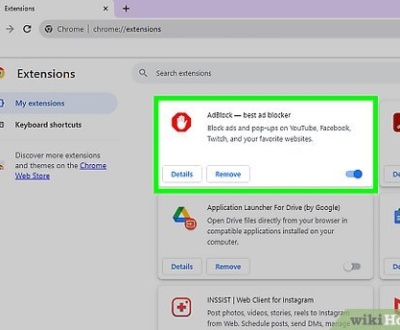Business proposals are important because it outlines the goals and objectives of a project, and puts forth a plan of action to achieve those goals. It is an essential document for any business owner or manager looking to establish a new venture or expand an existing one with a potential client.
A business proposal is separate from a business plan which is used to outline your own business goals and objectives.
What is a business proposal?
A business proposal is a written communication from a company to a prospective client with the aim of securing a business agreement.
It is important to differentiate between business proposals and plans as they serve different purposes. Business plans concentrate on the company’s overall strategy and operations, while proposals aim to promote particular products or services. In addition to seeking investors, utilizing a proposal can also be beneficial in attracting new customers to your business.
Below we cover what is in a Business Proposal but we haven’t included a cover letter. We believe that a cover letter isn’t necessary for a proposal but can be used to make them look more professional.

How to Write a Business Proposal
1. Begin with a title page.
It is necessary to communicate fundamental details in this situation. Start with “Greetings, my name is [Name] and I represent [Company Name]. This proposal was submitted on [Date] for the consideration of [Client/Individual Name].
Your title page should reconcile engagement with professionalism. It’s a tone-setter, so you need to make sure yours is sleek, aesthetically appealing, and not too “out there.”
2. Create a table of contents.
A strong user experience is important in all contexts, including business proposals. It is essential to ensure that your proposal is easily understandable and accessible to the intended audience. The document begins with a table of contents.
Incorporating a table of contents in a business proposal can inform the recipient about the content included. Including a clickable table of contents in electronic proposals can enhance the reader’s experience by allowing for easy navigation.
3. Explain your “why” with an executive summary.
The executive summary provides a clear explanation of the purpose of the proposal and highlights why our proposed solution is the most suitable for the potential client. Accuracy and precision are crucial in this section. What makes you the most suitable choice for them?
The purpose of the executive summary is to present the benefits of your company’s offerings and how they can address the prospect’s needs. It should provide a clear understanding of your company’s value proposition, regardless of whether the prospect reads the entire proposal.
The example effectively explains the business’s overall function and its ability to meet the reader’s specific needs.
4. State the problem or need.
The summary of the issue at hand allows for a demonstration of understanding the client’s needs and the problem they require assistance.
To succeed in this task, it is important to engage in research, critical thinking, and additional consideration. When approaching a client’s issues, it is important to take a comprehensive approach and identify areas where you can provide assistance. It is then necessary to present these issues in a persuasive manner that facilitates further action.
5. Propose a solution.
A recommended approach is to present a tailored strategy that addresses the specific problem at hand, demonstrating a clear understanding of the client’s needs and requirements.
Communicate the deliverables, methods, and timeframe to the appropriate parties.
6. Share your qualifications.
Do you possess the necessary qualifications to address this prospect’s issue? In the business proposal template, use this section to explain why you are the most suitable for the job by presenting client success stories and relevant awards or accreditations to establish credibility and trustworthiness.
7. Include pricing options.
Setting the right price for your product can be difficult, as it’s crucial to steer clear of both undervaluing and overvaluing it. It may be beneficial to provide a fee table with various pricing options to cater to the potential customer’s budget. Some proposal software has pricing tables that are adaptable, allowing clients to examine the products or services they desire, with the cost changing automatically.
8. Summarize with a conclusion.
A summary of the proposal is needed after providing the aforementioned information. Please provide information on your qualifications and how they make you the most suitable candidate. Please let me know if you are available to continue the conversation. The objective of the proposal is to ultimately secure the client’s willingness to collaborate with your company. Please provide your contact information for easy follow-up.
9. Clarify your terms and conditions.
The project timeline, pricing, and payment schedules should be detailed in this section. This summarizes the agreement between you and the client upon acceptance of the proposal. It is recommended that you review the terms and conditions with your legal team before submitting the proposal.
10. Include a space for signatures to document the agreement.
Please sign in the box below to indicate that you agree to the terms outlined above. If you have any further questions or concerns, please do not hesitate to contact us.
Business Proposal Format & Ideas
1. Start with an outline.
It is recommended to have a comprehensive understanding of your goals before composing your business proposal. Developing an outline that includes the major sections and relevant information can aid in maintaining focus and preserving the coherence of your message during the writing process. It is advisable to create an outline prior to commencing writing to ensure that your message remains consistent.
2. Include data and visuals.
Including hard, quantitative data in your business proposal can effectively emphasize the value of your business and differentiate it from others.
Incorporating pertinent statistics and visual aids, such as charts and graphs, can strengthen your proposal and establish credibility.
3. Add social proof.
Including social proof and client, testimonials can increase the credibility of your proposal, as personal persuasion may have limitations in highlighting the value of your business.
When it comes to potential customers, they may exhibit skepticism toward the information presented to them. It is common for them to place more trust in the opinions and experiences of their peers and other customers rather than the seller. Therefore, incorporating customer quotes and client testimonials can be an effective tool for persuasion.
4. Incorporate video into your proposal.
When creating an online proposal using document file formats such as PDF, incorporating multimedia elements can enhance the overall proposal experience by making the document more engaging and dynamic.
Including a video in your proposal, either as an introduction or to explain complex aspects of the project, can leave a positive impact. This approach is particularly effective for prospects who prefer visual or auditory communication.
5. Use a call-to-action.
It is important to give clear direction to prospects. Even the most compelling proposal may not be effective if the next steps are not clearly defined. Therefore, it is crucial to ensure that the reader understands what actions to take following the proposal.
Providing a clear call to action is essential to ensure that your reader knows exactly what steps to take after expressing interest in your proposal. Without such guidance, the reader may be unsure of what to do next.
6. Include up-sell and add-on opportunities.
To get the most out of a reader’s interest, you need to include additional information about your business in your proposal. If you don’t, readers won’t explore the upper tiers of your solutions. It’s important to offer them the opportunity to learn more. They need to know what else your business has to offer.
7. Create a sense of urgency.
Creating a sense of urgency can be beneficial when presenting a business proposal, as a lack of urgency may lead to indecisiveness and missed opportunities.
Including your business goals in your proposal can help persuade potential clients to sign up for your services. By highlighting both short and long-term objectives, clients can gain a better understanding of your company’s vision and how it aligns with their needs. Encouraging them to start collaborating with you right away based on the appeal of your short-term goals can be effective.
8. Keep it simple.
The length of a business proposal is not set in stone. The ideal length is determined by the amount of information you need to communicate.
When crafting a proposal, it is important to prioritize quality over quantity. Utilize concise and straightforward language, and refrain from using excessive business terminology. The goal is to ensure the proposal is easily comprehensible for any reader. It’s best not to overcomplicate things.
9. Make the decision for them.
Our offer exceeds expectations and we are committed to eliminating any obstacles throughout the process. Saying “no” would mean missing out on valuable opportunities.
10. Stay on brand.
When presenting a proposal, it is important to showcase your company’s unique qualities and remain authentic to your brand, demonstrating what distinguishes you from other competitors.
11. Quality control.
It is important for the proposal’s effectiveness that it is thorough and free of mistakes. It is recommended that it is reviewed multiple times before submission.
Let your business proposal do the talking.
Your business proposal should be tailored to meet the needs of your prospective clients. They should have a clear understanding of your company and what services it can provide after reading through your plan. This article provides tips and examples to help you create a professional and customized proposal. By doing so, you can impress your client and potentially win their business.
The Serial Seller Conclusion
A business proposal is part of a standard sales process.
Receive requests for proposal regularly? Sick of providing a formal document to each client?
We use proposal software called PandaDoc for our business proposals and we are able to easily and quickly edit the types of proposals and are able to select from pre-made types of business proposals.
A business proposal is also known as a sales proposal and is used to sign a new client or expand services within your existing clients.
Want help with your business proposals? Book a Call with us Now!
About us and this blog
We are a Full-Service Sales & Marketing provider that aims to help small to medium businesses increase their leads and sales while helping remove the business owners from their day-to-day activities so they can focus more on the long-term goals of their business.
Book a Meeting with us!
We offer Done-For-You Sales, Sales Coaching, and Advisory as well as Digital Marketing Services. If you want to increase the leads generated for your business and need some guidance and accountability, book a call with us now.
Subscribe to our newsletter!
More from our blog
See all postsRecent Posts
- How Do You Stop Google Ads May 9, 2025
- How to Make Money Off Social Media May 5, 2025
- How to Duplicate Page WordPress May 1, 2025










Pingback: How to Develop Effective Lead Generation Strategies